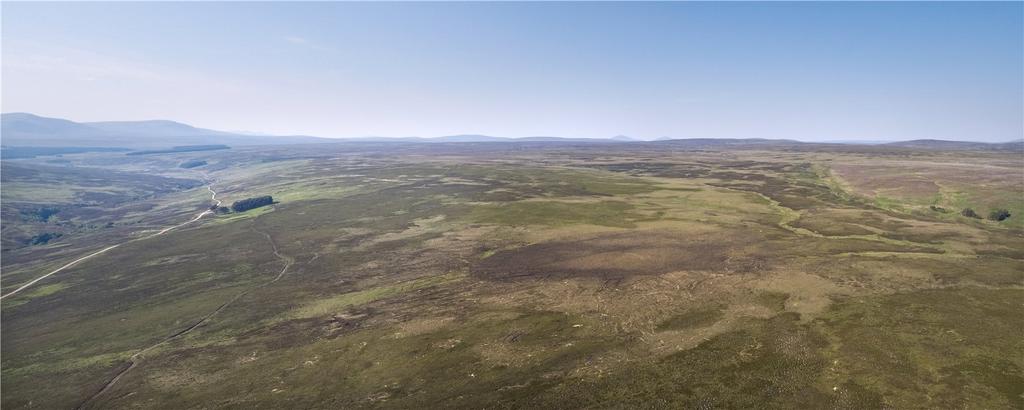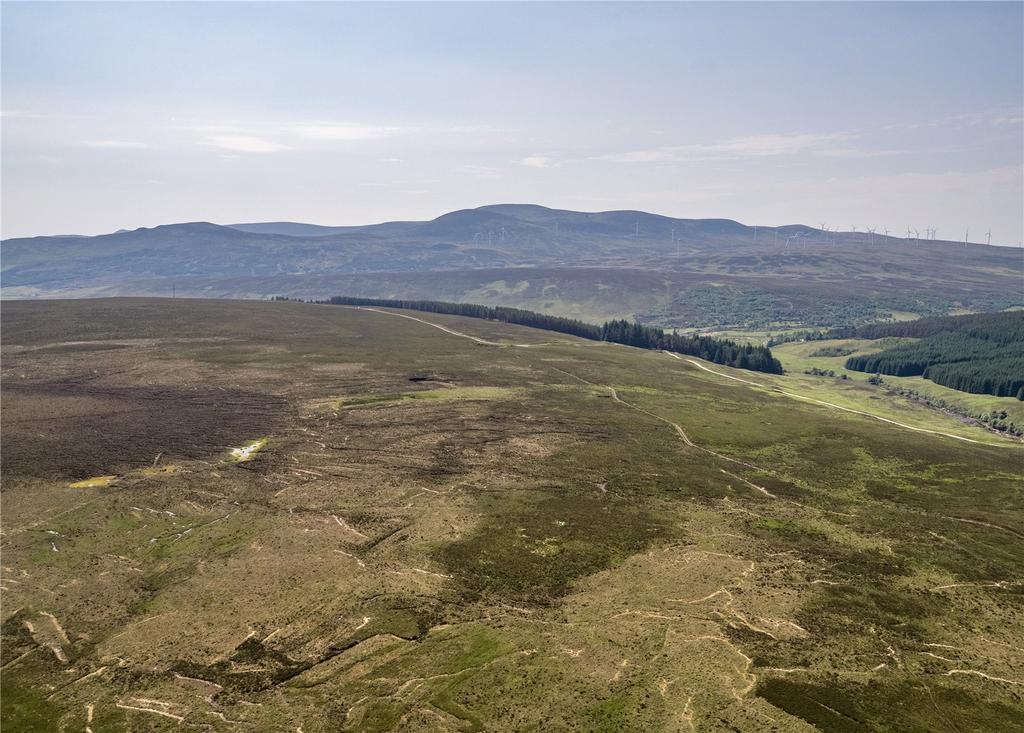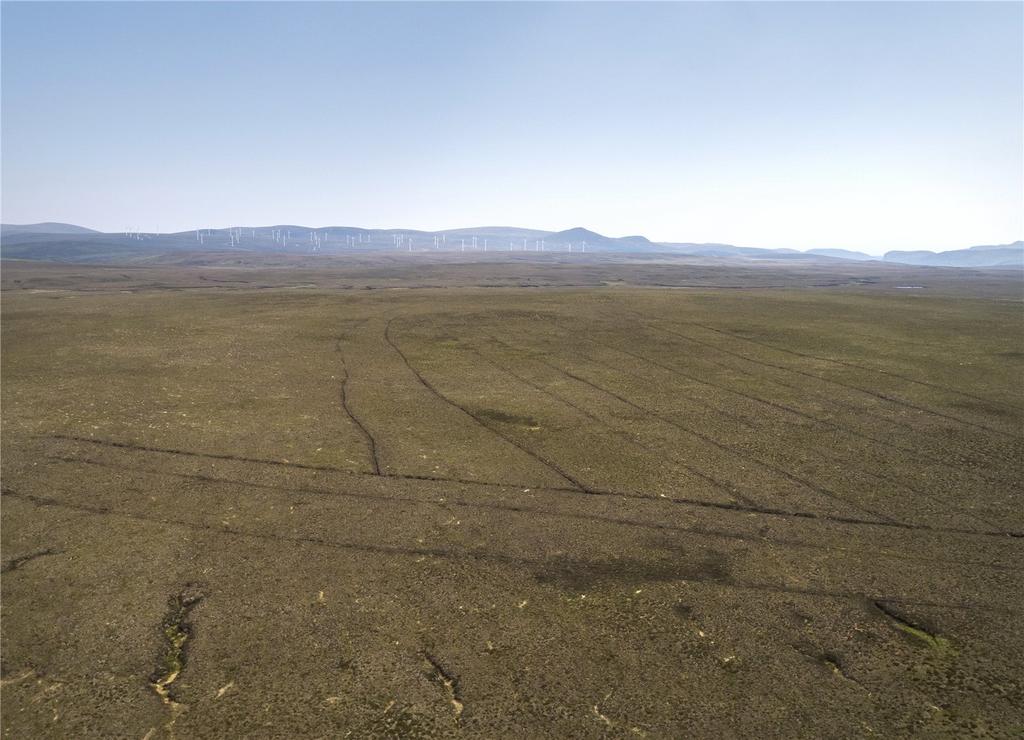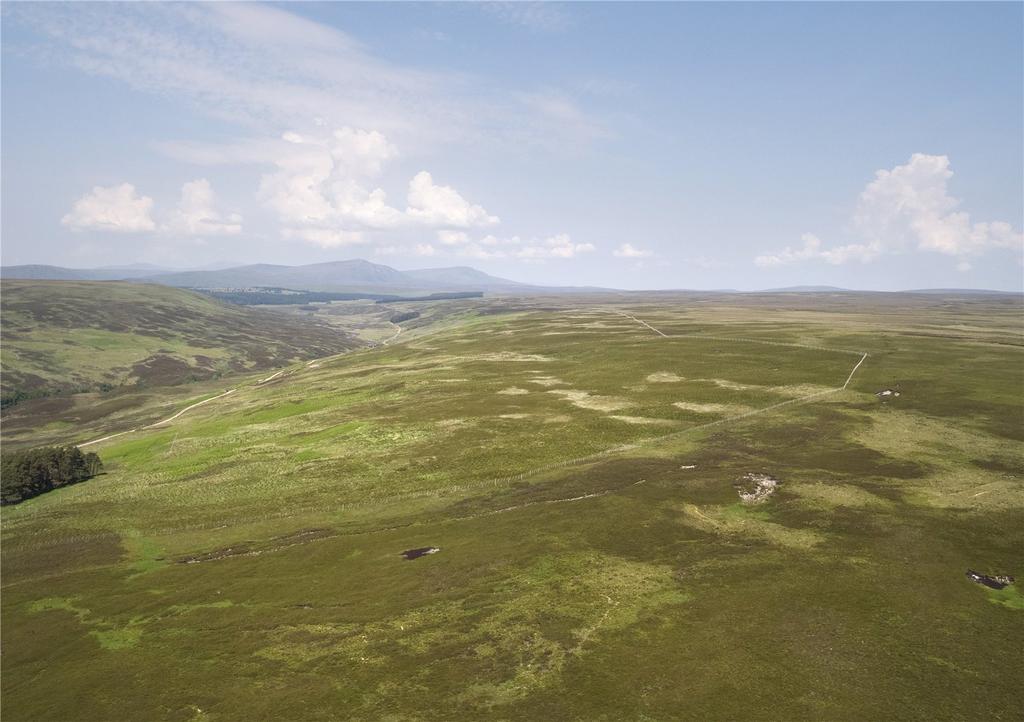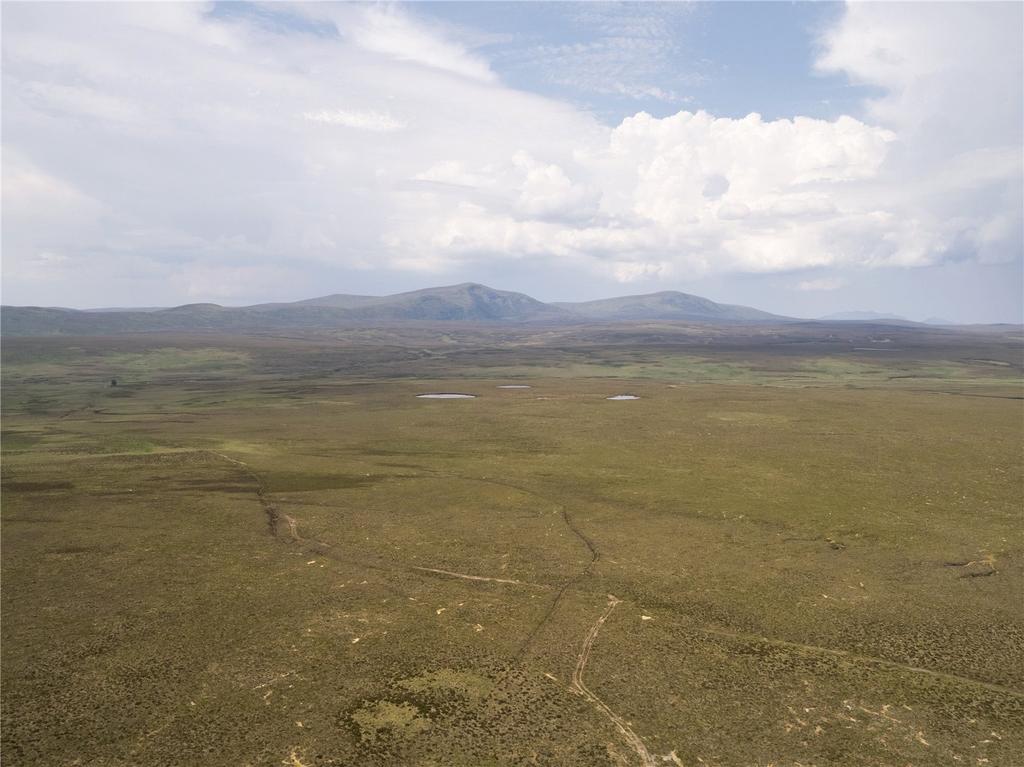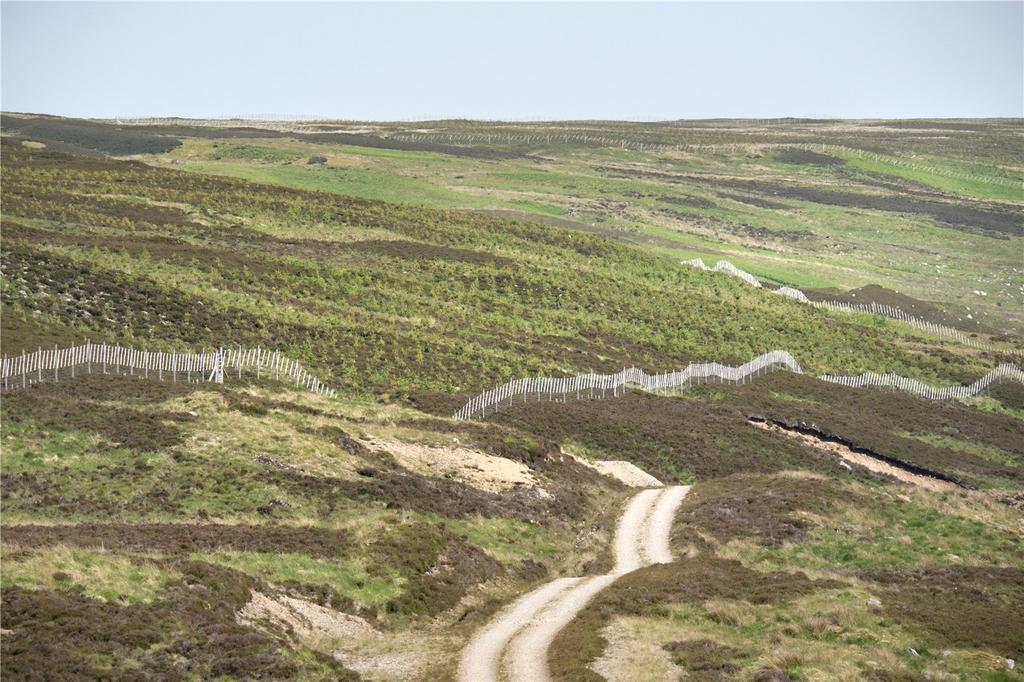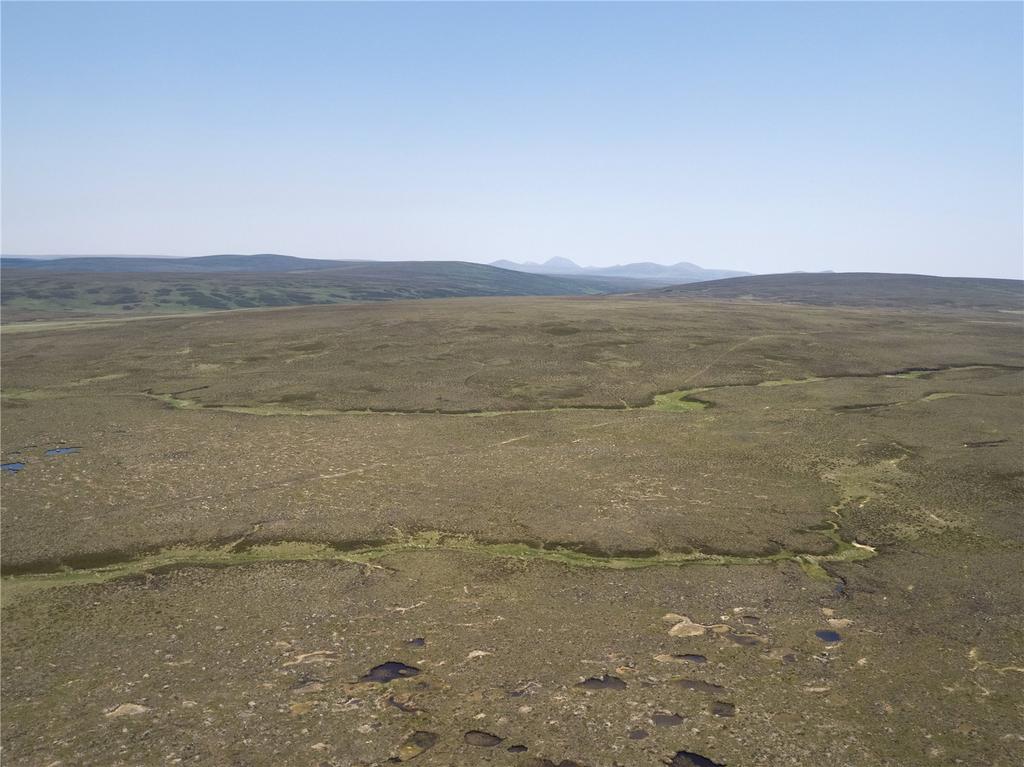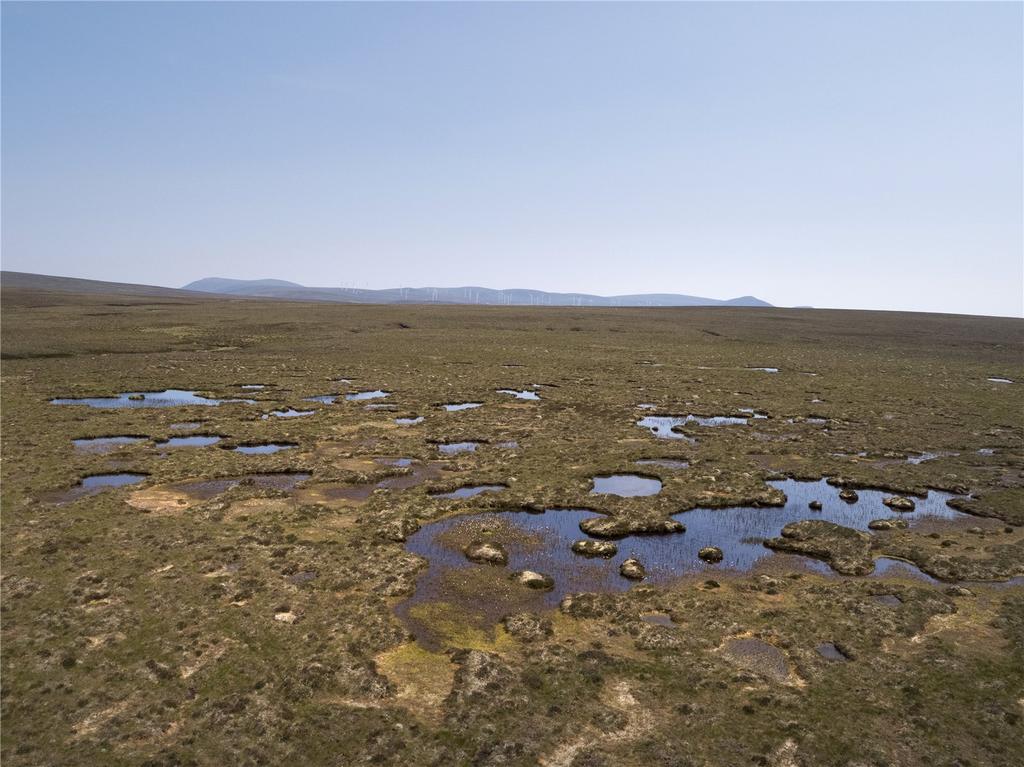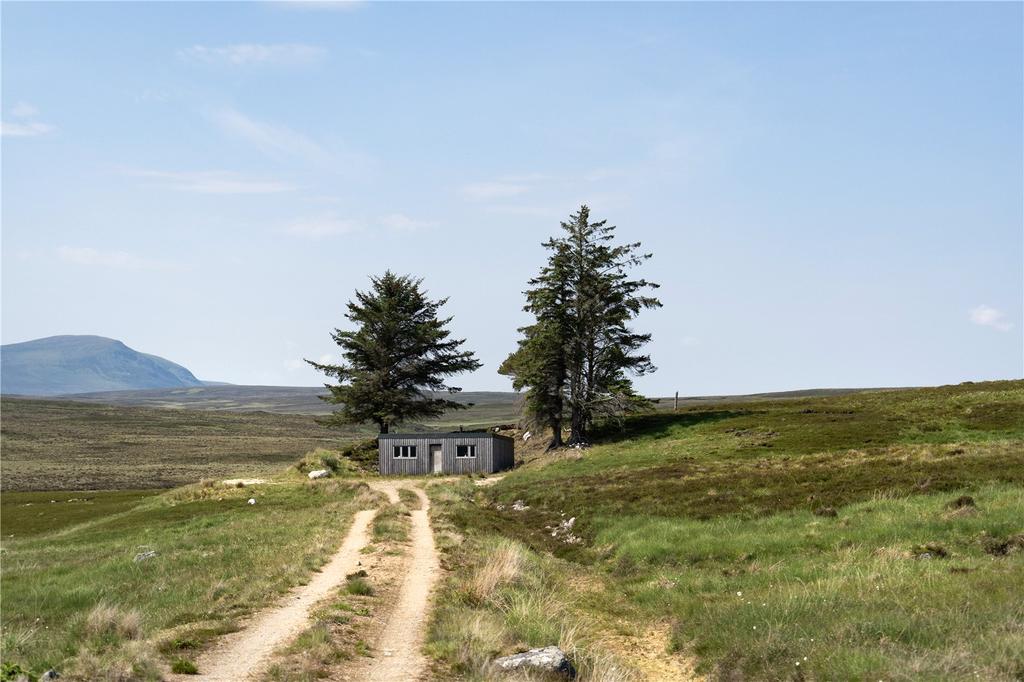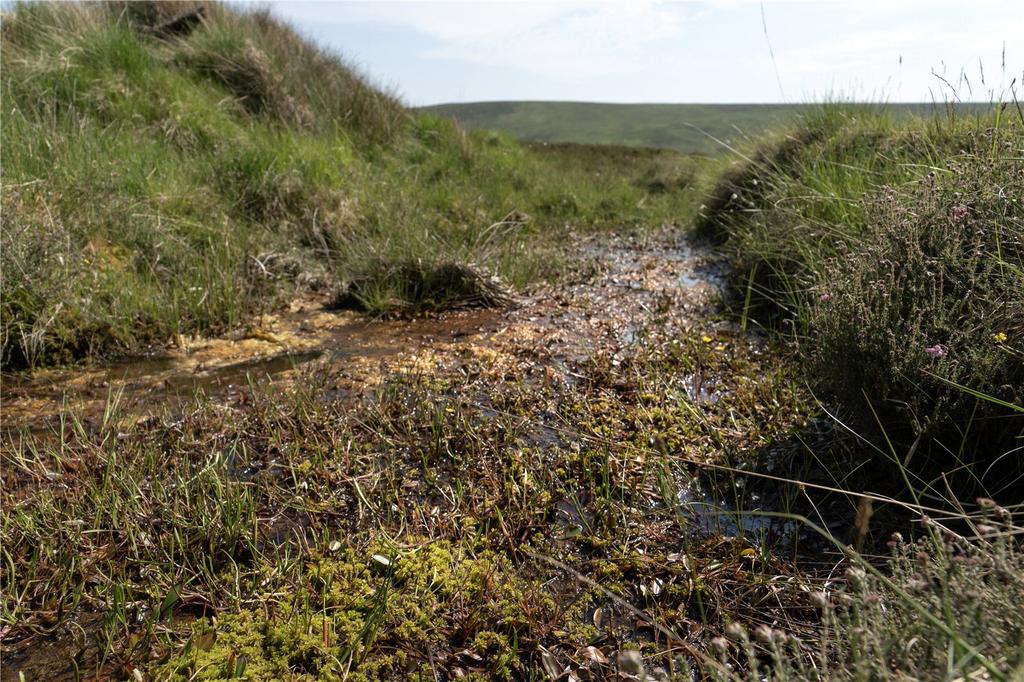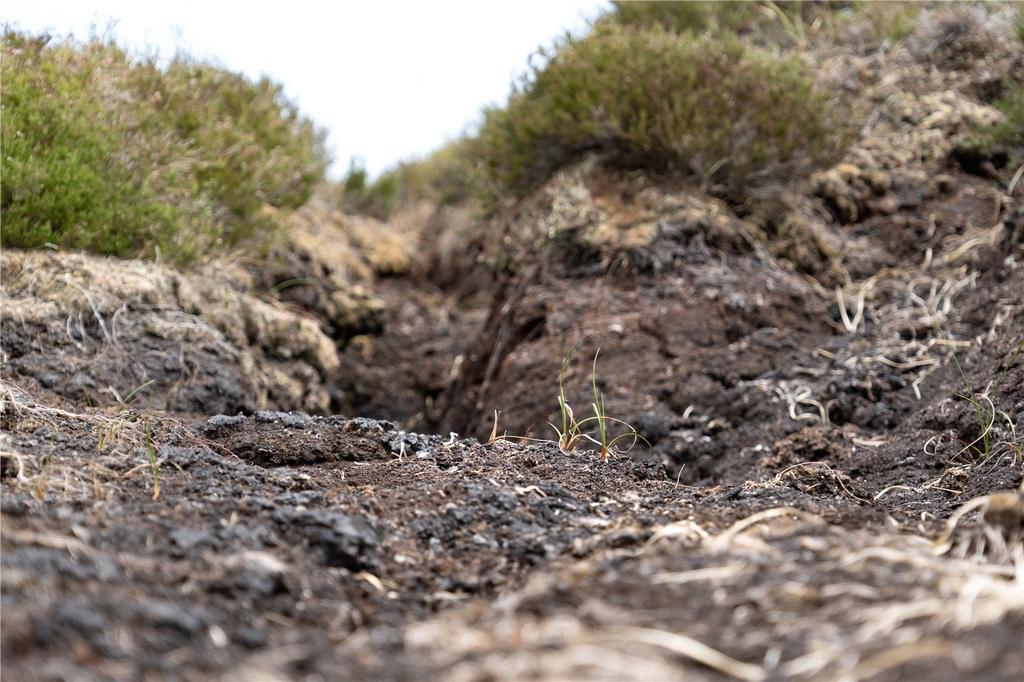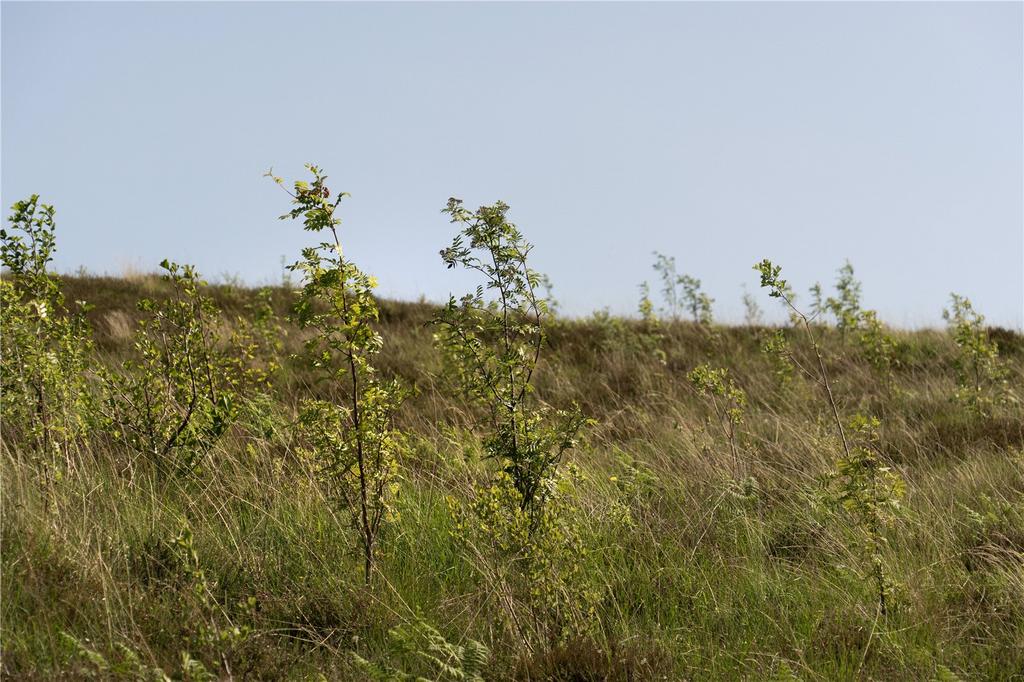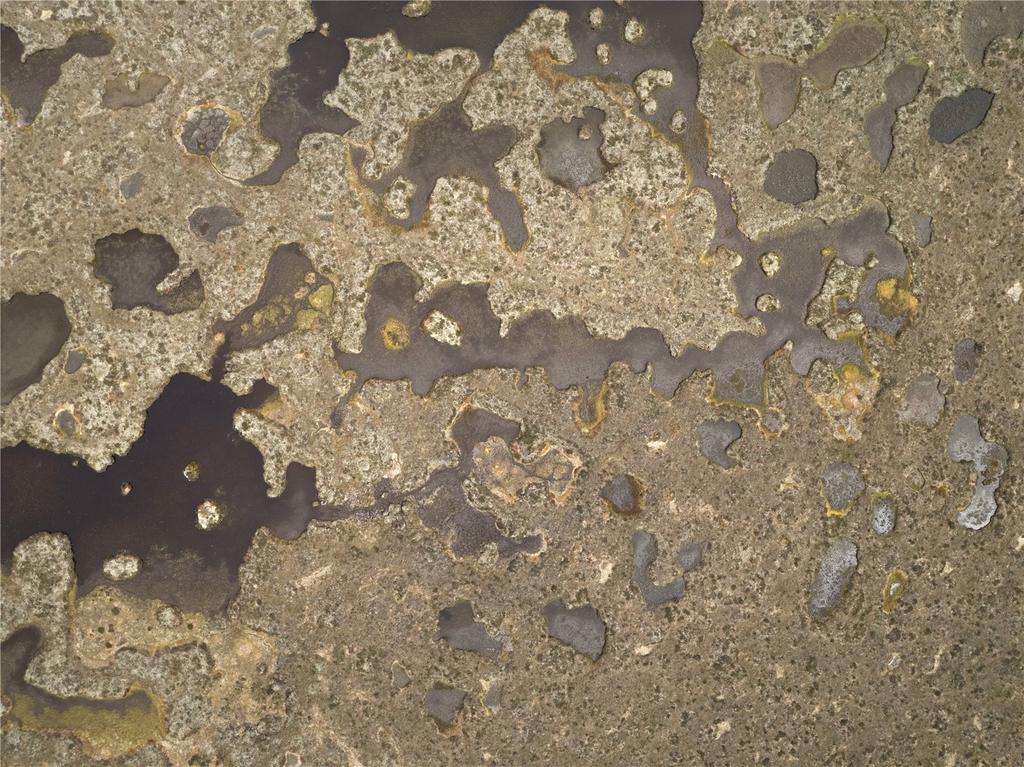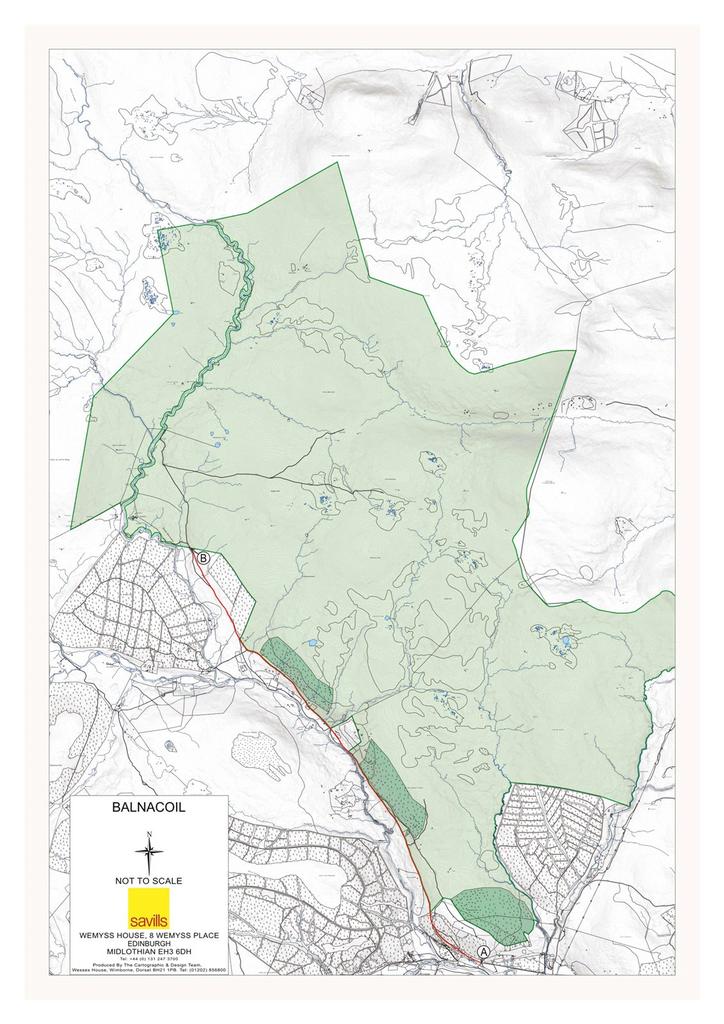Offers over
£8,500,000Land for sale
Balnacoil Estate, Brora, Sutherland, KW9
Featured
Study
Land
15,230.00 acre(s)
Key information
Features and description
- Tenure: Freehold
- About 6,163 HA (15,230 Acres)
- Approximately 1,780 hectares of degraded peatland with a potential cumulative claimable emissions reduction of about 334,908 t CO2e
- Established 144 hectare native woodland scheme with associated 25,909 pending issuance units
- 4,383 hectares of open hill and moorland
- Significant potential for further woodland creation
Extensive peatland restoration opportunity in Scotland’s Flow Country
Description
Balnacoil comprises about 6,163 hectares (15,230 acres) of magnificent rolling hills, moorland and native woodlands, rich in natural assets and offering significant potential for carbon and biodiversity-based projects. Situated within the Caithness and Sutherland Flow Country, the landscape is defined by gently undulating hills interspersed with lochans, small rivers, burns, and sheltered gullies, providing a wonderful habitat for a range of wildlife, flora and fauna.
The soil types across the estate are largely peaty gleys and blanket peat, with an agricultural land capability of classes 5 and 6. At the lowest point, the land sits at about 90 metres above sea level on the slopes of Balnacoil Hill and rises up to 365 metres at the summit of Cnoc na Breun-choille in the north western extremity of the estate. From here, there are views across to the Strath of Kildonan. The subjects of sale currently form part of a larger sporting estate, and therefore appropriate rights of access will need to be reserved and granted as necessary. The purchaser of Balnacoil will benefit from a right of access along the 5.5 mile hard track running from the public road to the bothy sitting above the banks of the River Skinsdale.
Balnacoil offers a new owner the opportunity to restore and manage large areas of degraded peatland and blanket bog, create new woodlands, and conserve and enhance a range of habitats, including wetlands, lochs and woodlands.
PEATLAND
The vast majority of the underlying land at Balnacoil is blanket bog, made up of nationally important Class 1 and Class 2 carbon-rich soils, deep peat (average depth is over 95 cm) and priority peatland Habitat of high conservation value. Degraded peatlands emit carbon as they dry out and erode. Restoration aims to re-wet these blanket bogs to encourage the formation of a protective layer of vegetation, such as sphagnum mosses, to significantly reduce future carbon emissions.
The proposed restoration project at Balnacoil is estimated to result in projected emission reductions of 334,908 tonnes of carbon dioxide over the 95-year lifetime of the project, producing a corresponding number of Peatland Carbon Units which can be sold or used to offset other business emissions.
This significant restoration work will preserve this internationally valuable habitat, its fragile ecosystem and achieve a substantial level of carbon reduction. As peatlands are restored through measures such as re-wetting and revegetation, they become havens for native flora and fauna to flourish and deliver wide biodiversity benefits.
Large-scale peatland restoration projects require a considerable volume of detail and time-consuming assessments, surveys and applications before work commences, resulting in long lead-in times to get projects underway. 3E services Ltd undertook a Peatland ACTION funded Peatland Restoration Feasibility Study and prepared a Peatland Restoration Plan in the spring/summer of 2023.
WOODLAND
In 2020, a 144 hectare native woodland was planted under the Forestry Grant Scheme with the principal objectives of diversifying habitats on the estate, sequestering carbon, improving future shelter for deer and providing a future income stream for the estate.
The scheme is split across three separate compartments running along the south-western edge of the estate and benefits from a predominantly south-facing aspect. Each compartment is enclosed by a deer fence and is exhibiting a high establishment success rate. The project is validated under the Woodland Carbon Code (project ID:[use Contact Agent Button]020) with a project start date of January 2020. The estimated claimable carbon sequestration over the project duration is 25,909 tCO2e over a 65-year period.
No formal planting assessment has been undertaken for additional woodland creation but an initial desktop appraisal suggests there may be potential for further native woodland creation on the estate in isolated pockets. A series of smaller hillside and riparian woodlands interspersed between the areas of peatland could provide an attractive mosaic of habitats and opportunities for further carbon sequestration.
WILDLIFE AND SPORT
Balnacoil is set amidst some of Scotland’s most spectacular scenery, attracting an abundance of birdlife throughout the year, including sea eagles, barn owls, hen harriers, golden plovers, curlew and greenshank to name a few. Many of these species are protected and utilise this unique landscape for breeding and rearing their young.
The spring and summer months see a variety of plants bloom. Insects and herptiles awaken, with the lochs, ponds and rivers coming alive with dragonflies, butterflies and reptiles.
Across the estate, a proactive deer management plan is followed to ensure the wildlife, plants and establishing trees can work in equilibrium. Balnacoil is part of the East Sutherland Deer Management Group, and the estate works in conjunction with neighbouring estates to maintain the deer density at a manageable level.
Given the relatively flat and open terrain, stalking on the hill at Balnacoil can be challenging and rewarding for those who undertake this important land management practice. Approximately 85% of the deer culled at Balnacoil are shot over the land offered for sale. In recent years, typically, 39 stags and 91 hinds have been culled (5-year average). Extraction of deer is by ATV.
At present, the stalking is carried out by the owners and their stalker, they would welcome the opportunity to enter into an arrangement to continue with the deer management over the subjects of sale.
BOTHY
Located at the north western end of the estate track, a short distance from the River Skinsdale, there is a timber-clad hill bothy currently used for lunch excursions and as a meeting point for stalking parties. Given its proximity to the majority of the peatland restoration sites, the bothy conveniently serves as a hub for site operations. Outside, there is a level hardstanding area, ideal for storing machinery and equipment.
AVAILABLE IN ADDITION
As noted above, the subjects for sale form a significant portion of a larger estate, which includes Balnacoil Lodge, three estate cottages, and 1,085 hectares (2,556 acres) of land and woodland. Additionally, there is a wind farm option in place.
The owner may consider selling the entire estate with a leaseback arrangement for the sport and the lodge. For more information, please contact the selling agent.
Location
Balnacoil is located in the scenic and rugged county of Sutherland. It rises up from near the banks of the Black Water, a tributary of the Brora River, to the open and vast areas of moorland to the north. The estate is almost equidistant from Inverness (62 miles), the capital of the Highlands, and Wick (52 miles), the principal town of northern Scotland.
Sutherland is a beautiful coastal county stretching from Dornoch in the southeast to Cape Wrath in the northwest of Scotland. This sparsely populated landscape encompasses rugged coastlines, heather-clad moors, lochs, rivers and glens. Sutherland is steeped in history and is scattered with relics from the past, including Iron Age brochs, burial sites, hill forts and castles.
While the estate has a feeling of isolation, it can be accessed with relative ease. The A9 trunk road, which connects the north of Scotland to the central belt, is about nine miles to the east. There is an airport at Wick which operates flights to Aberdeen, and Inverness Airport has a wider choice of local, national and international flights.
Brora lies nine miles to the southeast and is the closest settlement to the estate, providing a range of basic day-to-day services and amenities, including a train station. Inverness provides a wider range of services one would expect to find in a thriving regional city.
Acreage: 15230 Acres
Directions
By Car: The public road to Balnacoil is accessed from the A9 shortly after entering the village of Brora. From the south, cross the River Brora and take an immediate left onto the Coal Pit Road. From the north, prior to crossing the River Brora turn right onto the Coal Pit Road. Head west along the Coal Pit Road for about 8.5 miles and the entrance to Balnacoil can be found on the right hand side.
The postcode for sat nav purposes is: KW9 6LX
what3words – ///smiling.wept.diplomats
Description
Balnacoil comprises about 6,163 hectares (15,230 acres) of magnificent rolling hills, moorland and native woodlands, rich in natural assets and offering significant potential for carbon and biodiversity-based projects. Situated within the Caithness and Sutherland Flow Country, the landscape is defined by gently undulating hills interspersed with lochans, small rivers, burns, and sheltered gullies, providing a wonderful habitat for a range of wildlife, flora and fauna.
The soil types across the estate are largely peaty gleys and blanket peat, with an agricultural land capability of classes 5 and 6. At the lowest point, the land sits at about 90 metres above sea level on the slopes of Balnacoil Hill and rises up to 365 metres at the summit of Cnoc na Breun-choille in the north western extremity of the estate. From here, there are views across to the Strath of Kildonan. The subjects of sale currently form part of a larger sporting estate, and therefore appropriate rights of access will need to be reserved and granted as necessary. The purchaser of Balnacoil will benefit from a right of access along the 5.5 mile hard track running from the public road to the bothy sitting above the banks of the River Skinsdale.
Balnacoil offers a new owner the opportunity to restore and manage large areas of degraded peatland and blanket bog, create new woodlands, and conserve and enhance a range of habitats, including wetlands, lochs and woodlands.
PEATLAND
The vast majority of the underlying land at Balnacoil is blanket bog, made up of nationally important Class 1 and Class 2 carbon-rich soils, deep peat (average depth is over 95 cm) and priority peatland Habitat of high conservation value. Degraded peatlands emit carbon as they dry out and erode. Restoration aims to re-wet these blanket bogs to encourage the formation of a protective layer of vegetation, such as sphagnum mosses, to significantly reduce future carbon emissions.
The proposed restoration project at Balnacoil is estimated to result in projected emission reductions of 334,908 tonnes of carbon dioxide over the 95-year lifetime of the project, producing a corresponding number of Peatland Carbon Units which can be sold or used to offset other business emissions.
This significant restoration work will preserve this internationally valuable habitat, its fragile ecosystem and achieve a substantial level of carbon reduction. As peatlands are restored through measures such as re-wetting and revegetation, they become havens for native flora and fauna to flourish and deliver wide biodiversity benefits.
Large-scale peatland restoration projects require a considerable volume of detail and time-consuming assessments, surveys and applications before work commences, resulting in long lead-in times to get projects underway. 3E services Ltd undertook a Peatland ACTION funded Peatland Restoration Feasibility Study and prepared a Peatland Restoration Plan in the spring/summer of 2023.
WOODLAND
In 2020, a 144 hectare native woodland was planted under the Forestry Grant Scheme with the principal objectives of diversifying habitats on the estate, sequestering carbon, improving future shelter for deer and providing a future income stream for the estate.
The scheme is split across three separate compartments running along the south-western edge of the estate and benefits from a predominantly south-facing aspect. Each compartment is enclosed by a deer fence and is exhibiting a high establishment success rate. The project is validated under the Woodland Carbon Code (project ID:[use Contact Agent Button]020) with a project start date of January 2020. The estimated claimable carbon sequestration over the project duration is 25,909 tCO2e over a 65-year period.
No formal planting assessment has been undertaken for additional woodland creation but an initial desktop appraisal suggests there may be potential for further native woodland creation on the estate in isolated pockets. A series of smaller hillside and riparian woodlands interspersed between the areas of peatland could provide an attractive mosaic of habitats and opportunities for further carbon sequestration.
WILDLIFE AND SPORT
Balnacoil is set amidst some of Scotland’s most spectacular scenery, attracting an abundance of birdlife throughout the year, including sea eagles, barn owls, hen harriers, golden plovers, curlew and greenshank to name a few. Many of these species are protected and utilise this unique landscape for breeding and rearing their young.
The spring and summer months see a variety of plants bloom. Insects and herptiles awaken, with the lochs, ponds and rivers coming alive with dragonflies, butterflies and reptiles.
Across the estate, a proactive deer management plan is followed to ensure the wildlife, plants and establishing trees can work in equilibrium. Balnacoil is part of the East Sutherland Deer Management Group, and the estate works in conjunction with neighbouring estates to maintain the deer density at a manageable level.
Given the relatively flat and open terrain, stalking on the hill at Balnacoil can be challenging and rewarding for those who undertake this important land management practice. Approximately 85% of the deer culled at Balnacoil are shot over the land offered for sale. In recent years, typically, 39 stags and 91 hinds have been culled (5-year average). Extraction of deer is by ATV.
At present, the stalking is carried out by the owners and their stalker, they would welcome the opportunity to enter into an arrangement to continue with the deer management over the subjects of sale.
BOTHY
Located at the north western end of the estate track, a short distance from the River Skinsdale, there is a timber-clad hill bothy currently used for lunch excursions and as a meeting point for stalking parties. Given its proximity to the majority of the peatland restoration sites, the bothy conveniently serves as a hub for site operations. Outside, there is a level hardstanding area, ideal for storing machinery and equipment.
AVAILABLE IN ADDITION
As noted above, the subjects for sale form a significant portion of a larger estate, which includes Balnacoil Lodge, three estate cottages, and 1,085 hectares (2,556 acres) of land and woodland. Additionally, there is a wind farm option in place.
The owner may consider selling the entire estate with a leaseback arrangement for the sport and the lodge. For more information, please contact the selling agent.
Location
Balnacoil is located in the scenic and rugged county of Sutherland. It rises up from near the banks of the Black Water, a tributary of the Brora River, to the open and vast areas of moorland to the north. The estate is almost equidistant from Inverness (62 miles), the capital of the Highlands, and Wick (52 miles), the principal town of northern Scotland.
Sutherland is a beautiful coastal county stretching from Dornoch in the southeast to Cape Wrath in the northwest of Scotland. This sparsely populated landscape encompasses rugged coastlines, heather-clad moors, lochs, rivers and glens. Sutherland is steeped in history and is scattered with relics from the past, including Iron Age brochs, burial sites, hill forts and castles.
While the estate has a feeling of isolation, it can be accessed with relative ease. The A9 trunk road, which connects the north of Scotland to the central belt, is about nine miles to the east. There is an airport at Wick which operates flights to Aberdeen, and Inverness Airport has a wider choice of local, national and international flights.
Brora lies nine miles to the southeast and is the closest settlement to the estate, providing a range of basic day-to-day services and amenities, including a train station. Inverness provides a wider range of services one would expect to find in a thriving regional city.
Acreage: 15230 Acres
Directions
By Car: The public road to Balnacoil is accessed from the A9 shortly after entering the village of Brora. From the south, cross the River Brora and take an immediate left onto the Coal Pit Road. From the north, prior to crossing the River Brora turn right onto the Coal Pit Road. Head west along the Coal Pit Road for about 8.5 miles and the entrance to Balnacoil can be found on the right hand side.
The postcode for sat nav purposes is: KW9 6LX
what3words – ///smiling.wept.diplomats
About this agent

It pays to specialise in a property market as broad as the one served by Savills Edinburgh. From prime commercial offices and out of town retail parks to the cream of city property, to country houses and sporting estates, the choice is as large and varied as the area we cover. That’s why we have dedicated teams specialising in prime residential property, farms and estates, land sales, commercial property, valuation and planning, right across the full property spectrum.
